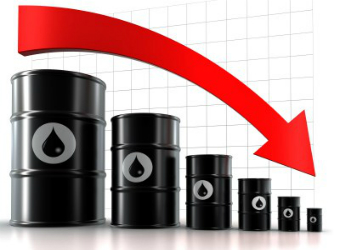Oil prices gave away earlier gains on Wednesday as analysts warned of a downward correction after prices have gained more than 13 percent over the past month.
Despite the decline, overall oil markets remained well supported on the back of tightening supply and strong global demand. The tighter fundamentals lifted both crude futures benchmarks about 13 percent above levels in early December, helped by production curbs by OPEC and Russia, as well as by healthy demand growth.
Brent crude futures were at $69.07 a barrel at 0441 GMT, down from a high of $69.37 earlier in the day and 18 cents below their last close.
Brent on Monday rose to $70.37 a barrel, its highest since December 2014, which was the beginning of a three-year oil price slump.
U.S. West Texas Intermediate (WTI) crude futures were at $63.68 a barrel, down 5 cents from their last settlement. WTI rose to $64.89 on Tuesday, also the highest since December 2014.
Norbert Ruecker, head of commodity research at Swiss bank Julius Baer, said a price “correction should occur… (as) hedge fund expectations for further rising prices have reached excessive levels.”
He said this was especially the case as political risk factors that have helped boost Brent, including tensions in Qatar, and the Kurdish region of Iraq and in Iran have so far not caused significant supply disruptions.
Money managers have raised the bullish positions in WTI and Brent crude futures and options to a record, according to data from the U.S. Commodity Futures Trading Commission and the Intercontinental Exchange.
Wang Tao, Thomson Reuters commodity analyst, said Brent may fall to around $68.50 a barrel due to technical chart indicators.
Still, traders and analysts said overall oil markets were well supported, and steep price falls unlikely.
The Organization of the Petroleum Exporting Countries (OPEC) and Russia have continued to withhold production since January last year and the cuts are set to last through 2018.
This restraint has coincided with healthy oil demand.
“Oil remains underpinned by the solid economy with strong oil demand tightening global oil inventories. The past years’ surplus supplies are slowly disappearing,” Ruecker said.
One factor that in 2017 prevented crude prices from rising further was a surge in U.S. production.
Despite a recent drop due to extreme cold, U.S. crude output is expected to soon break through 10 million barrels per day (bpd), challenging top producers Russia and Saudi Arabia. Source: Reuters
Source: Reuters



